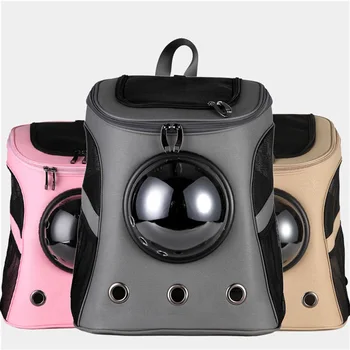Do You Sneeze After Eating? Here Are The Reasons Why

There’s no way to prevent gluten intolerance, but there are ways to reduce the symptoms. Talk to your healthcare provider about a treatment plan that works for you. But most people find relief from symptoms by following a gluten-free diet. You should work with your healthcare provider and a dietitian to plan your diet. Other research suggests that wheat might affect the lining of some people’s digestive tracts.
First, consider getting tested to rule out celiac disease
- NCGS can cause both gastrointestinal and extraintestinal symptoms, although some people may only experience GI symptoms while others may only experience non-GI symptoms.
- People with gluten sensitivity also seem more likely to experience arm and leg numbness.
- Wheat is a grain used as an ingredient in breads, pastas, and cereal.
- Wheat is one of the top eight food allergens in the United States.
- With NCGS, gluten appears to cause direct damage to intestinal tissues in the absence of a known autoimmune response.
Recognizing celiac disease in adults can be difficult because its symptoms are often broad. By Jane AndersonJane Anderson is a medical journalist and an expert in celiac disease, gluten sensitivity, and the gluten-free diet. Well, I don’t get a runny nose, but I do get a lot of post-nasal drip down the back of my throat. Also, I usually experience a sharp pain and tightening in my throat (almost like when a cold virus is first lodging in your throat).
- You can use this to prevent anaphylaxis if you accidentally eat wheat.
- This is the cause of sinus congestion and can occur from ingestion of wheat products in people who have a wheat sensitivity.
- Although symptoms usually begin within minutes of exposure, they may occur up to an hour later (74).
- Many people with celiac disease and gluten sensitivity suffer from very dry skin.
When should I call my doctor?

If you have abdominal pain and dark-colored stools that persist no matter what you eat, a medical provider can conduct a colonoscopy or a CT or MRI scan of your abdomen to check for colitis. However, people with gluten sensitivity frequently exhibit various rashes and other skin conditions that clear up when they go gluten-free, according to the Sobriety researchers’ experience. Dr. Fasano says he’s seen many skin rashes in people with non-celiac gluten sensitivity. Gluten intolerance can cause a broad range of symptoms, including digestive issues, headaches, fatigue, joint pain, and skin rashes.
- Diagnosing gluten sensitivity mainly involves a process of elimination and attentive monitoring.
- Keep a food and symptom diary to find out what foods cause this condition in you.
- Symptoms of an allergy can include sinus congestion, sneezing and excess mucus production in the nasal passages.
- I somehow think it could be something else that sets me off coughing and a bit mocousy for about an hour at the most, then when that is over I am fine.
Medical Diagnosis and Treatment

Currently, there is no guaranteed cure for gustatory rhinitis or snatiation. In many cases, you can prevent this reflex by steering clear of certain foods or avoiding eating large meals. A sneeze or consistent sneezing after eating is rarely cause for medical concern, but can be annoying and distracting.
- Although everyone with celiac disease is sensitive to gluten, some people only experience skin symptoms without the common digestive symptoms (10, 11).
- To diagnose celiac disease or wheat allergy, your doctor will need to conduct a blood or skin prick test.
- I baked my own bread for the first time on Thanksgiving and sneezed my head off, blowingmy nose every 5 seconds.
- There’s no way to prevent gluten intolerance, but there are ways to reduce the symptoms.
- This means that it’s important not to begin a gluten-free or wheat-free diet on your own before seeing a doctor.
- A food allergy, such as a wheat allergy, is when your immune system overreacts after you eat a certain food.
A blistering skin condition called dermatitis herpetiformis is one manifestation of celiac disease (9). Celiac disease can cause many symptoms, including skin problems, digestive issues, and mood changes. It’s disruptive to daily life without the appropriate diagnosis and management. Also, sometimes a person may have a cold or other illness that can cause them to sneeze after eating. The two occurrences, eating and sneezing, may seem related but are separate.

Dr. Rodney Ford
Many gluten-free and wheat-free alternatives to common foods are available such as bread, pasta, cereals, and baked goods. Be aware that wheat and gluten can be found in some surprising places. You might even spot them in ice cream, syrup, vitamins, and food supplements. Be sure to read the ingredient labels of the foods and beverages you consume to make sure they don’t contain wheat or gluten. Regardless of which of these “gluten allergies” you think you have, your first step should be an appointment with your healthcare provider. They can help you determine what medical testing, if any, you may need.


Dr. Ford and Dr. Fine agree that your skin can suffer if you’re gluten-sensitive, with can gluten make you sneeze rashes and other skin symptoms. The symptoms disappear when the person follows a gluten-free diet and reappear in the case of a glutening. In fact, there is some evidence that eating gluten-free may help with eczema, even in people who don’t necessarily have celiac disease. A food allergy, such as a wheat allergy, is when your immune system overreacts after you eat a certain food.




